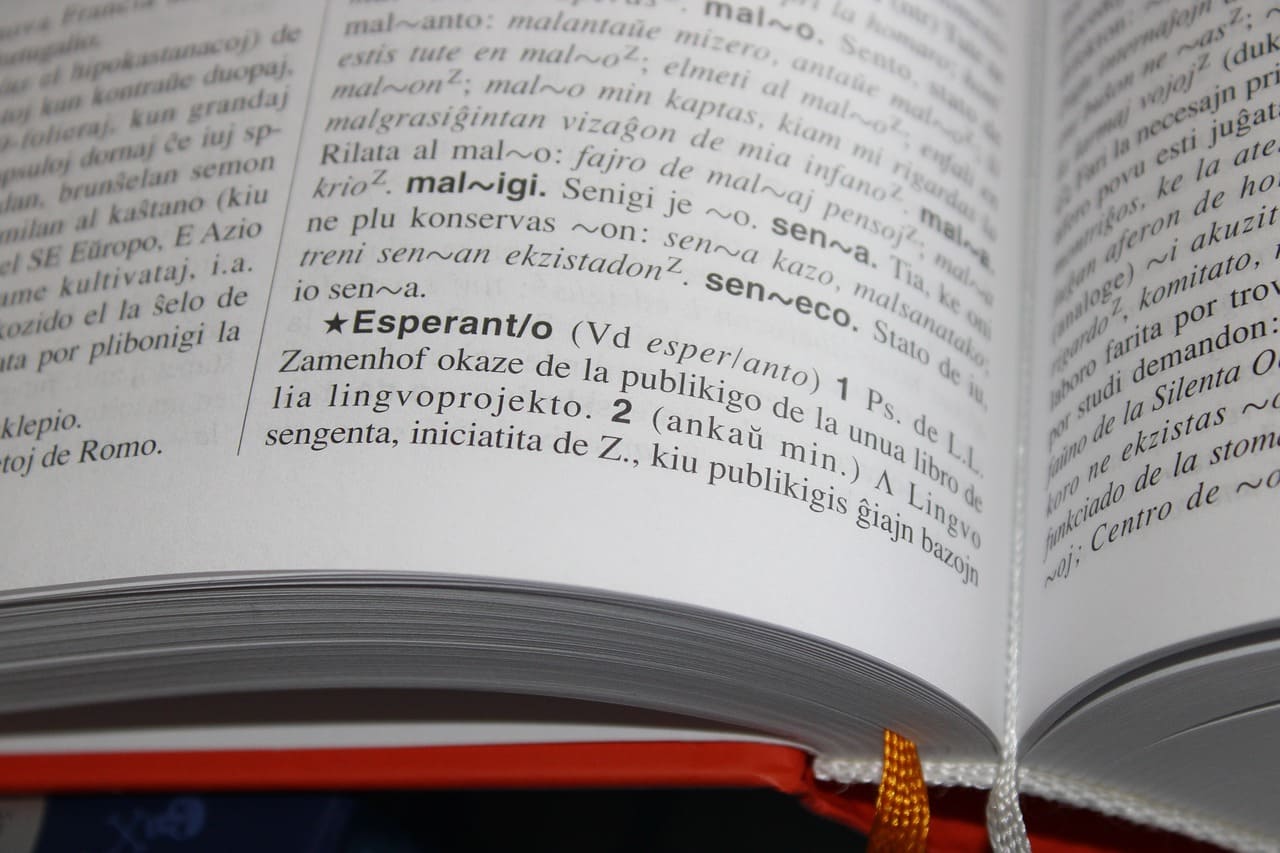
Esperanto – The World's Most Popular Artificial Language
Esperanto is the world's most widely spoken artificial language, with a history filled with intrigue, politics, and struggles for international recognition. Created over a century ago by Ludwik Zamenhof, Esperanto was designed to be an easy-to-learn, universal language, drawing elements from multiple existing languages.
Today, it continues to attract linguists and language enthusiasts eager for a unique challenge. In this post, we’ll explore the origins of Esperanto, its key features, what sets it apart from natural languages, and how many people speak it today.
What is the Esperanto language?
Esperanto is an artificial language designed to be an international second language. First proposed by a Polish linguist, Esperanto is perceived as the best example of a constructed planned language. Esperanto has a relatively simple grammar compared to natural languages so it can be learned easily and quickly by anyone who speaks a language already. Esperanto was originally intended to serve as a universal language that could facilitate easier communication between people from different linguistic backgrounds. Although Esperanto didn’t become the lingua franca desired, it’s estimated that Esperanto still has at least several hundred thousand speakers worldwide.
Who Created Esperanto and Why?
The Esperanto language was created by L. L. Zamenhof, a Polish ophthalmologist, and linguist, in 1887. He had been interested in the idea of a universal auxiliary language since his youth and had been working on the development of such a language for several years.nZamenhof's goal was to create a neutral and easy-to-learn language that could be used as a common means of communication between people of different cultures and languages to promote peace and understanding. He believed that a common language would break down barriers and foster greater understanding between different groups of people.
In 1887, Zamenhof published a book under the pseudonym "Doktoro Esperanto" (Doctor Hopeful), which presented the grammar, vocabulary, and principles of the Esperanto language. He also included several texts in Esperanto to illustrate how the language could be used.bThe language was designed to be easy to learn, with regular and simple grammar, and a vocabulary primarily made up of roots and affixes common to many languages. The grammar is simple, with only 16 grammatical rules, and no irregularities.
Esperanto's initial reception was positive, and soon it started to spread around the world. Esperanto clubs and societies were formed, and Esperanto literature began to be published. In 1905, the first World Esperanto Congress was held in Boulogne-sur-Mer, France, and it has been held annually ever since. Esperanto faced some opposition from governments and other groups, but it has managed to survive and is still spoken by a small community of speakers worldwide today. It has its own culture, literature, and even music, and it's used in some international events and congresses.
Main features
-
Regular Grammar – One of the most distinctive aspects of Esperanto is its entirely regular grammar. Unlike natural languages, which have many exceptions and irregular verb conjugations, Esperanto follows a set of strict and predictable rules. For example, verb endings do not change based on subject or number: Present tense: mi amas (I love), li amas (he loves), ni amas (we love) – the verb amas remains the same for all subjects.
-
Phonetic Spelling and Pronunciation – Esperanto uses a phonetic writing system where each letter corresponds to a single sound, and words are pronounced exactly as they are written. This eliminates spelling inconsistencies found in many natural languages. The Esperanto alphabet has 28 letters, based on the Latin script but with six unique accented letters (ĉ, ĝ, ĥ, ĵ, ŝ, ŭ), which have consistent pronunciations. There are no silent letters, and stress always falls on the second-to-last syllable of a word.
-
Logical Word Formation and Affixes – Esperanto has a systematic way of forming new words using root words and a set of regular prefixes and suffixes. This allows learners to expand their vocabulary quickly without memorizing large numbers of words. Example of opposites: bona (good) → malbona (bad) (mal- always indicates the opposite).
-
Cultural and Political Neutrality – Unlike many natural languages, Esperanto was designed to be an international auxiliary language, not tied to any one nation or culture. Its creator, L. L. Zamenhof, envisioned it as a tool for fostering global communication and understanding. Because Esperanto is not associated with any specific country, it serves as a neutral means of communication, reducing linguistic and cultural biases in international conversations.
-
Efficient and Flexible Vocabulary – Esperanto's vocabulary is primarily drawn from Romance, Germanic, and Slavic languages, making it somewhat familiar to speakers of many European languages. However, its grammar is more agglutinative, meaning that words are formed through the systematic addition of affixes. This allows Esperanto speakers to express complex ideas using fewer root words than in most natural languages.
-
Simple and Consistent Syntax – Esperanto sentence structure is generally subject-verb-object (SVO), similar to English and many other languages. However, the use of the accusative case (-n ending) allows for flexibility in word order without losing meaning. For example: La kato kaptas la muson (The cat catches the mouse) → La muson kaptas la kato (The mouse, the cat catches). Both sentences mean the same thing because muson has the accusative ending, indicating it is the object of the action.
-
Pronouns and Gender Neutrality – Esperanto pronouns are straightforward, with no case changes or gender distinctions beyond li (he) and ŝi (she). The neutral ĝi is used for objects or when gender is unknown. Recent adaptations also include ri as a gender-neutral pronoun in some Esperanto-speaking communities. Additionally, most words are gender-neutral by default, with feminine forms created using the suffix -in-, e.g., patro (parent/father) → patrino (mother).
-
International and Active Community – Despite being a constructed language, Esperanto has a strong global presence. It is spoken by communities in over 100 countries, with literature, music, online courses, and annual international meetups like the Universala Kongreso (Universal Congress). Esperanto has even been used in diplomacy, travel, and internet communication.
How many people around the world speak Esperanto?
It is difficult to determine the exact number of people who speak Esperanto fluently, as there are no official registration or census figures for the language. However, it is estimated that there are between 100,000 to 2 million Esperanto speakers worldwide, with the number likely being towards the lower end of that range.
While it has a dedicated community of speakers and enthusiasts, it has not achieved widespread adoption as originally envisioned by its creator, Ludovic Lazarus Zamenhof. Nevertheless, it has its own culture, literature, and even music, and it's used in some international events and congresses. Esperanto remains an important part of language and linguistic history and continues to be used by a passionate community of speakers around the world.
Countries Where Esperanto is Spoken
Esperanto is spoken in many countries worldwide, though it does not have an official status anywhere. In Europe, Poland, where the language was created, has an active Esperanto community. Germany, France, Hungary, and Russia also have a significant number of speakers, with Hungary even recognizing Esperanto as a language for university entrance exams. In the Americas, Brazil has one of the largest Esperanto-speaking communities, with some schools offering Esperanto courses. The United States has a strong online presence and active Esperanto groups, while Argentina also hosts Esperanto societies and cultural events. In Asia, China has supported Esperanto through publications and broadcasts, Japan has a long history of Esperanto use with many active learners, and Iran has an emerging Esperanto-speaking community.
Esperanto remains a remarkable linguistic achievement, demonstrating the potential of a planned language to foster international communication. While it has not replaced natural languages, it has succeeded in creating a global community of speakers who continue to keep its ideals alive. Its regular grammar, phonetic structure, and logical word formation make it accessible to learners, while its cultural neutrality allows for unbiased communication. More than just a language, it represents a vision of unity and understanding across cultures.







